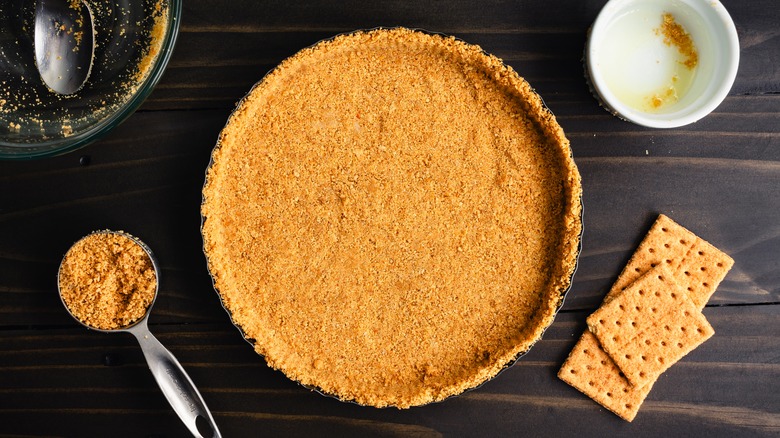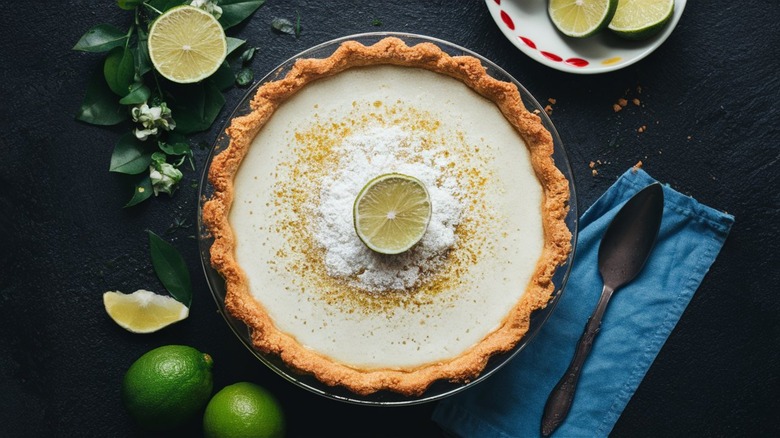The Case For Baking Your Graham Cracker Pie Crust
Even though it's not as intricate or finicky as a traditional flaky pie crust, that doesn't mean graham cracker crust is foolproof. In fact, there's one step that's often overlooked when preparing the crust. While many graham cracker crust recipes call for chilling rather than baking the crust, a few minutes in the oven might just be the difference between your dish turning out as a crumbly mess or a solidly delicious pie.
Graham cracker crusts consist of crackers — though cookies make a swoonworthy graham cracker crust swap for cheesecakes — crushed and mixed with melted butter, sugar, and salt. Together, they form a base you can easily press up the sides of any pie dish. From there, you can either bake your crust for a few minutes or refrigerate it until the crust sets.
While both methods are perfectly acceptable, prebaking your graham cracker crust helps the ingredients bind better, which is great for heftier desserts like cheesecake or custard-based pies.
When to bake and when to chill
Baking your graham cracker crust is often just the trick to take your pie to the next level. But it's not always necessary (or recommended). For many no-bake pies, baking your crust is at best contradictory and at worst could spell disaster for the recipe. That's because many no-bake pies have a softer, fluffier filling that works better with a slightly softer crust. Pies like easy no-bake pumpkin pie or strawberry pretzel pie, which are made with pudding, Jell-O, or whipped cream bases, work better with a less solid, unbaked pie crust.
However, other pies, such as the classic key lime pie or custard-based pies that require baking, such as coconut cream pie or Ree Drummond's perfect pecan pie, would definitely benefit from the addition of this step, as the more solid base gives structure to the pie, balancing the filling. Plus, baking your crust adds a toasty flavor that really makes it pop.

